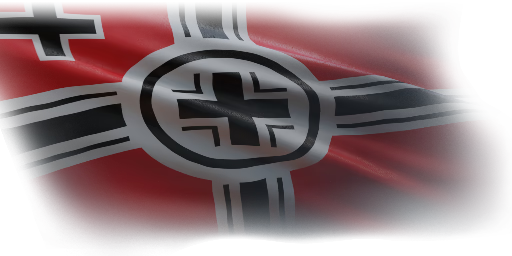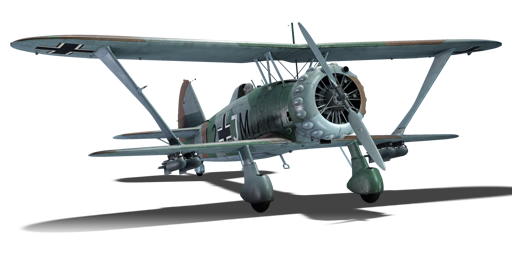



Designed in the early 1930s, the Hs 123 was a single-seat dive bomber that served with the Luftwaffe from the Spanish Civil War all the way to 1944. In 1933, the Luftwaffe set out a requirement for a dive bomber. Henschel, who was mainly a train manufacturer, began designing and developing planes. The Hs 123 was developed for the Luftwaffe requirement and won the contract over the Fieseler Fi 98. The Hs 123 had its first public flight in 1935 and featured all-metal construction and a sesquiplane design. The prototype was fitted with a 650 hp engine, but the production version utilized an almost 900 hp engine. Almost 1,000 Hs 123s were produced, with them serving in the bomber role as well as reconnaissance duties. It served for just under 10 years and was only brought out of service due to the lack of spare parts.
Introduced in Update 1.59 "Flaming Arrows", the Hs 123 A-1 is an excellent biplane bomber. It features two loadouts: four 50 kg bombs or a loadout consisting of a single 250 kg bomb. The Hs 123 also comes armed with two 7.92 mm machine guns mounted in the nose, with 500 rounds per gun. Since it's classified as a bomber, the Hs 123 has a bomber air spawn, which provides a significant advantage against enemy fighters. The all-metal construction also gives the Hs 123 a very respectable structural speed limit of 577 km/h (358 mph).
flaps
flaps
flaps
brake
control
| Belt | Belt filling | Armor penetration (mm) at a distance: | |||||
|---|---|---|---|---|---|---|---|
| 10 m | 100 m | 500 m | 1000 m | 1500 m | 2000 m | ||
| AP-T/AP-I/AI | 9 | 8 | 6 | 3 | 0 | 0 | |
| AP-T/AP/AI/AP-I | 13 | 12 | 7 | 3 | 2 | 0 | |
| AP-T | 9 | 8 | 6 | 3 | 0 | 0 | |
| AI/AP/AP/AP/AI | 13 | 12 | 7 | 3 | 2 | 0 | |
4 × 50 kg SC50JA bomb












Flight performance | |
|---|---|
Survivability |
|---|
Weaponry | |
|---|---|